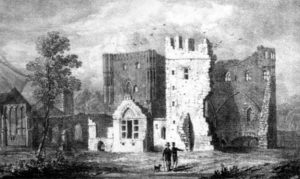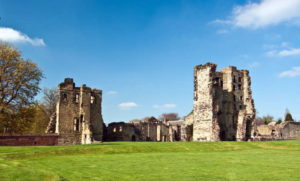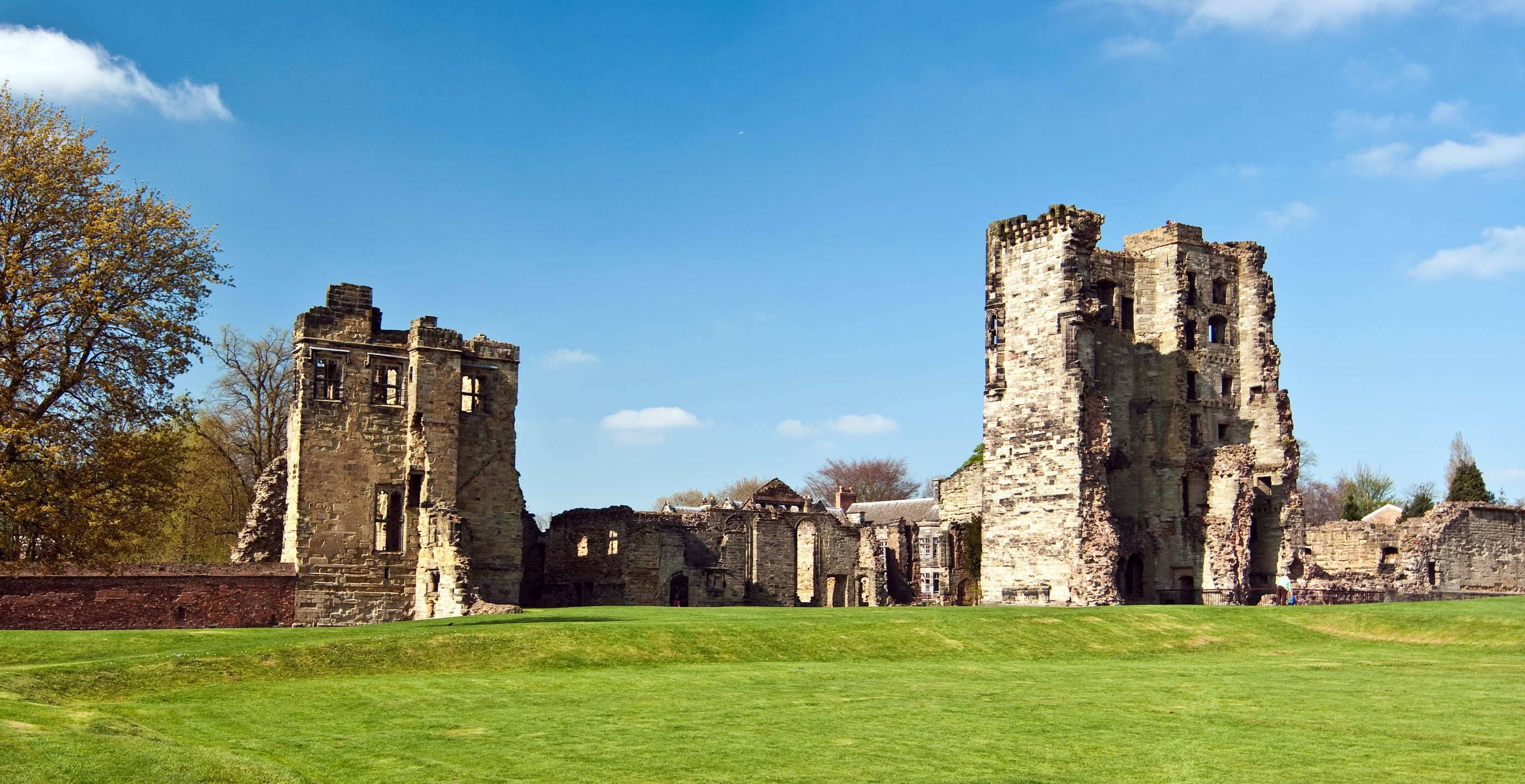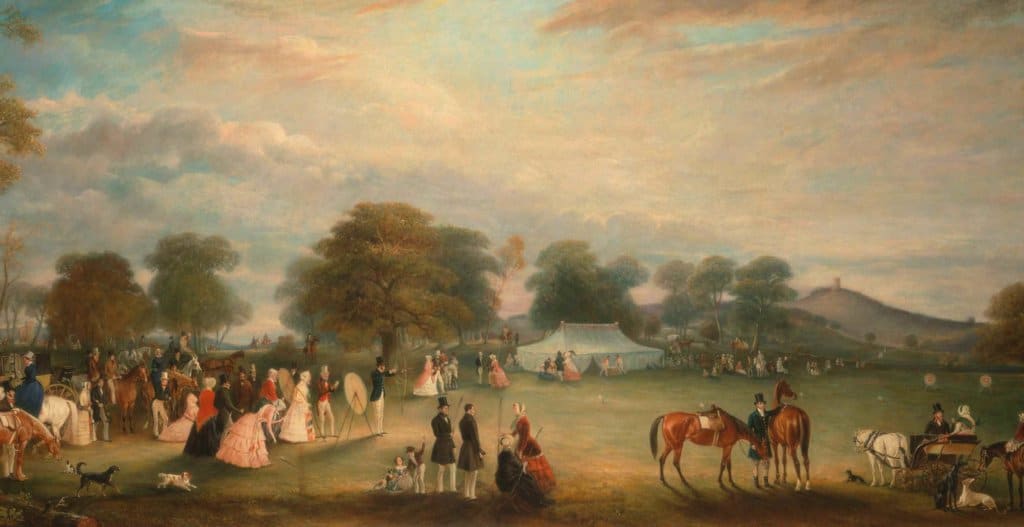Telephone: 01530 413343
Website: https://www.english-heritage.org.uk/visit/places/ashby-de-la-zouch-castle/
Owned by: English Heritage. Opening times: The castle is only open on Saturdays and Sundays 10.00-16.00 from October-March. From March-September dates vary annually but the castle is generally open 10.00-16.00 Wednesday-Sunday.
Public access: An entrance fee applies for those visitors who are not English Heritage members.There are a small number of free parking spaces onsite (unsuitable for minibuses and coaches). Visitors are therefore advised to use the town car park. Wheelchair access is limited to the castle grounds only and pushchairs are not admitted. Dogs on leads are welcome.
Remains of a 15th century castle on the site of an earlier manor house dating to the 11th century. The fortified manor of Ascebi was first referenced in the Domesday Book as the property of Robert de Beaumont, later Earl of Leicester, who had owned it since 1100. In 1160, the Earls of Leicester granted the tenancy to the Zouche family, beginning with Lord Alain de Parrhoet la Souche. The family then occupied the manor until their line died out in 1399, making various additions and extensions to the manor including a new hall and solar. Their holding included a 60-acre deer park, rabbit warren and dovecot.
The period of expansion from manor to castle began in the 15th century, when Edward IV granted both the house and land to his Lord Chamberlain, William, Lord Hastings, in gratitude for his loyalty and his actions at the Battle of Towton. Lord Hastings had plans for an impressive castle, with the old manor house at its core. In 1474, he was granted the right to crenellate (fortify) several of his manors, as well as to surround them with deer parks. Had he completed his plans for Ashby, his main residence, the imposing castle with its proposed four mighty towers, would have been set in a deer park of over 340 acres (140 ha). Hastings also ordered the building of a chapel in perpendicular style.

Above: Engraving of Ashby de la Zouch Castle, 1831
However, Hastings was executed by Richard Duke of Gloucester, later Richard III, in 1483. The half-completed castle passed to Hastings’ widow Katherine and remained in the Hastings family until the Civil War. Mary Queen of Scots was imprisoned there in 1569.
During the English Civil War, the massive tower constructed by William Hastings, along with the Kitchen Tower, was slighted (damaged to render it unusable) by order of Parliament. However, parts of the castle were habitable until the 1700s. In the 19th century, Ashby de la Zouch Castle achieved fame through Sir Walter Scott‘s novel “Ivanhoe”, as he used it as the setting for the tournament episode.
What remains of the castle is still imposing. It is one of the few defensive constructions to have a genuine underground passage, between the Hastings Tower and the Kitchen Tower. Most of the other so-called secret passageways in castles and ecclesiastical buildings are simply the main drain!

Above: Ashby de la Zouch Castle



